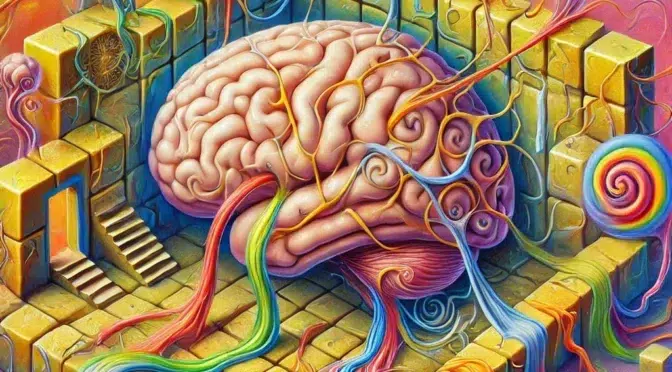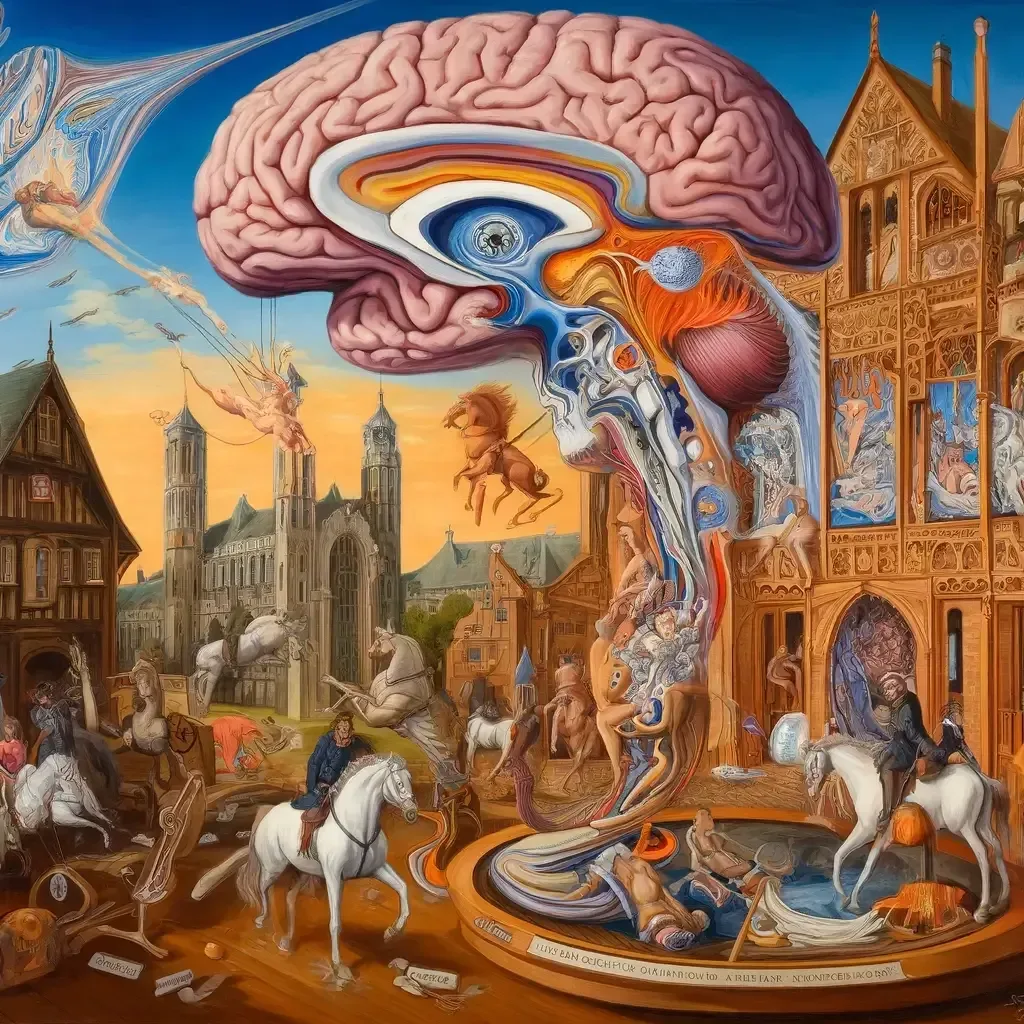Theory of Mind: An Overview
Theory of Mind (ToM) refers to the cognitive ability to attribute mental states—beliefs, intents, desires, emotions, knowledge—to oneself and others and to understand that others have beliefs, desires, and intentions different from one’s own. This capacity is crucial for human social interactions as it allows individuals to predict and interpret the behaviour of others, navigate social complexities, and engage in empathetic and moral reasoning.
Historical Background and Discovery
The ToM concept emerged from philosophy and psychology, with roots in philosophical discussions about mind, perception, and reality. However, primatologists David Premack and Guy Woodruff first coined the term “theory of mind” in 1978 when investigating whether chimpanzees could infer intentions in others.
Psychologists and neuroscientists began to focus on ToM in humans in the late 20th century, particularly within developmental psychology. A landmark in the study of ToM was the development of the “false-belief task” in the early 1980s by researchers Wimmer and Perner. This task was designed to test the understanding that others can hold incorrect beliefs about the world, marking a fundamental aspect of ToM.
Testing for Theory of Mind
The false-belief task remains a classic method for assessing ToM. In one version, a child watches a puppet show where one character places an object in one location and leaves the room. Another character then moves the object to a new location. Upon returning, the child is asked to predict where the first character will look for the object. Success in this task suggests an understanding that others can hold false beliefs.
Advanced tests for older children and adults explore more nuanced aspects of ToM, including understanding sarcasm, metaphor, and the emotions and thoughts of others based on subtle cues.
Neurological Basis
Neuroscientific research has identified several brain regions associated with ToM, including:
These areas constitute part of what is sometimes called the “social brain,” working together to process complex social information and understand others’ mental states.
The System and How It Works
ToM operates through a network of these brain regions, integrating information from social cues (facial expressions, body language, verbal communication) to infer others’ mental states. This cognitive system allows for nuanced social interactions, including empathy, deception, cooperation, and competition.
Theory of Mind in Daily Life
At Home: ToM is central to family dynamics, allowing family members to understand each other’s feelings, desires, and intentions, facilitating empathy and conflict resolution.
At School: Children use ToM to navigate social interactions with peers and teachers, understand the perspectives of others, and work cooperatively in group settings. It also plays a role in understanding literary characters’ motivations and actions in stories.
At Work: In the workplace, ToM is crucial for teamwork, leadership, negotiation, and understanding clients’ or colleagues’ viewpoints. It enables employees to anticipate reactions and tailor communication accordingly.
Through the Ages: As individuals age, ToM plays a vital role in maintaining social relationships and understanding the complex social world. However, certain neurological conditions, such as Alzheimer’s disease or autism spectrum disorder, can impact the effectiveness of ToM, affecting social interactions.
In conclusion, Theory of Mind is a fundamental cognitive ability that underpins social interaction and communication. Its development, testing, and neurological basis offer valuable insights into human psychology, highlighting the complexity and sophistication of social cognition.
Theory of Mind Across Different Life Stages: Understanding Social Nuances from Toddlers to the Elderly
Understanding the intricacies of how we interpret and respond to the mental states of others is a fascinating journey that spans from the tender years of toddlerhood through the rich tapestry of adulthood and into the reflective period of elder years. Theory of Mind (ToM), a pivotal cognitive ability, is the lens through which we view and interpret the world around us, allowing us to navigate the complex web of human emotions, intentions, and interactions. This exploration delves into the nuances of ToM across different life stages, shedding light on how this critical skill evolves and influences our daily interactions, relationships, and understanding of the world as we age. From the emerging empathy of toddlers to the sophisticated social strategies of adults and the reflective wisdom of the elderly, ToM is a cornerstone of our social existence, intricately woven into the fabric of our lives.
Theory of Mind (ToM) plays a critical role in our social interactions throughout different stages of life, each marked by unique developmental milestones and challenges.
Toddlers (Ages 1-3)
Children are just beginning to develop a basic sense of ToM at this stage. They start to realize that other people have different thoughts and feelings from their own.
Daily Life Examples:
- Empathy: Toddlers may begin to show concern for a crying peer, although their understanding of the other child’s emotions is still rudimentary.
- Play: In shared play, toddlers engage in more cooperative and imaginative activities, requiring an understanding of others’ roles and perspectives.
Social Nuances:
- Understanding Intent: They may recognize whether someone’s actions are intentional or accidental, influencing their responses to different situations.
- Simple Persuasion: Attempting to influence others’ behaviors, like convincing a parent to give them a treat.
School-Age Children (Ages 4-12)
Children’s ToM becomes more sophisticated during these years. They become adept at understanding others’ beliefs, thoughts, and feelings, crucial for forming friendships and navigating social hierarchies.
Daily Life Examples:
- Group Dynamics: Understanding the perspectives of multiple peers in group settings, managing conflicts, and building friendships.
- Education: Grasping that teachers know they do not, aiding in the learning process and classroom interactions.
Social Nuances:
- Deception and Truth: Discerning between truth and lies, understanding that others can have deceptive intentions.
- Empathy Development: A more nuanced understanding of empathy, recognizing and responding appropriately to others’ emotional states.
Adolescents (Ages 13-19)
During adolescence, ToM contributes to more complex social interactions and the development of abstract thinking, including moral and ethical reasoning.
Daily Life Examples:
- Peer Relationships: Navigating complex social relationships and hierarchies, understanding the subtleties of peer pressure, and the dynamics of in-group and out-group behaviours.
- Identity Formation: Considering how others perceive them, which plays a significant role in identity formation and self-consciousness.
Social Nuances:
- Strategic Thinking: Adolescents use ToM to anticipate the actions and reactions of others, essential in competitive and cooperative situations.
- Moral Reasoning: They begin to understand different perspectives, contributing to more sophisticated moral and ethical reasoning.
Adults (Ages 20+)
In adulthood, ToM is integral for maintaining personal and professional relationships, navigating social norms, and engaging in complex societal structures.
Daily Life Examples:
- Workplace: Understanding colleagues’ and clients’ perspectives, which is crucial for teamwork, leadership, and negotiation.
- Parenting: Parents use ToM to interpret their children’s needs and behaviors, facilitating better communication and bonding.
Social Nuances:
- Empathy and Support: Adults use ToM to provide support and empathy in relationships, recognizing when others need help or space.
- Conflict Resolution: Understanding others’ viewpoints and emotions is key in resolving personal and professional conflicts.
Elderly (Ages 65+)
While ToM abilities can decline with age, they remain essential for social interaction, life satisfaction, and cognitive health.
Daily Life Examples:
- Social Engagement: Maintaining friendships and understanding social situations, which is crucial for emotional well-being.
- Adapting to Change: Using ToM to adapt to changes in social roles and relationships due to retirement or health issues.
Social Nuances:
- Generational Perspectives: Understanding and empathizing with younger generations’ viewpoints and experiences.
- Wisdom and Guidance: Offering insights and guidance to younger individuals, leveraging a lifetime of accumulated ToM experiences.
In all these stages, ToM is a dynamic and evolving skill that shapes and is shaped by our interactions, relationships, and social environments, highlighting the complexity and adaptability of human social cognition.










